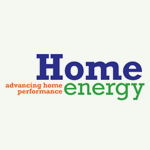|
|
Energy Efficient
We do not strictly control Google ad content. If you believe any Google ad is inappropriate, please email us directly here.
Sort results by: Date Added | Alphabetically - With clothes dryers being large energy users, choosing energy efficient models and implementing energy saving techniques can make a big difference in energy usage.
- Air conditioners use the most electricity of any home appliance. Here's how to reduce energy usage in cooling your home.
- Fluorescent lamps with improved performance and design features are now available.
- Sheep wool insulation has an R-value of approximately 3.5 to 3.8 per inch of material thickness 0.3 to 0.6 points higher than fiberglass, cellulose, or mineral wool.
- Typical duct systems lose 25 to 40 percent of the heating or cooling energy put out by the central furnace, heat pump, or air conditioner.
- How to make homes tight and ventilate right.
- An examination of 13 common myths reveals that they should be treated with some healthy skepticism.
- An energy mortgage increases a consumer’s buying power.
- In early 2007 Kevin and Kathy Christopherson set about building a home in Hanover, Wisconsin. This was no ordinary new home construction, though. Since Kathy has an acute chemical sensitivity, special precautions were necessary – precautions that presented some particularly challenging construction issues.
- The net cost of owning a green home can be comparable to that of owning a conventional home – sometimes even less.
- LEED for Homes is a green home certification system for assuring homes are designed and built to be energy- and resource-efficient and healthy for occupants.
- The majority of the balanced ventilation systems on the market are heat recovery ventilators (HRVs). Most HRVs consist of an insulated cabinet, a heat-recovery core, two fans, some ductwork, and a control. But not all HRVs are created equal.
- Greening a house that was built before we knew to care isn\'t impossible; here are 45 tips.
- Builders tend to focus more on energy and environmental conservation in their selection of green features; and may inadvertently contribute to poor indoor air quality (IAQ).
- Make your home more energy efficient and save.
- The harmonious interaction with nature is the guiding principle of the Building Biology approach to healthy home building.
- EPA\'s Energy Star program now addresses indoor air quality (IAQ). Here is a summary of requirements you can use to improve your home\'s IAQ.
- One of the most important ideas to emerge in recent years is the concept that a house is much more than an assemblage of materials. Instead, building scientists and researchers now view a house as an interactive system.
- Simple strategies that can help you lower your energy bills.
- Viewing the whole house as an integrated system helps.
We do not strictly control Google ad content. If you believe any Google ad is inappropriate, please email us directly here.



Information provided by The Healthy House Institute is designed to support,
not to replace the relationship between patient/physician or other qualified
healthcare provider.
Education Partners
Ads, ad links, products and content on this page are not necessarily endorsed by these organizations.
|

We do not strictly control Google ad content. If you believe any Google ad is inappropriate, please email us directly here.
|








